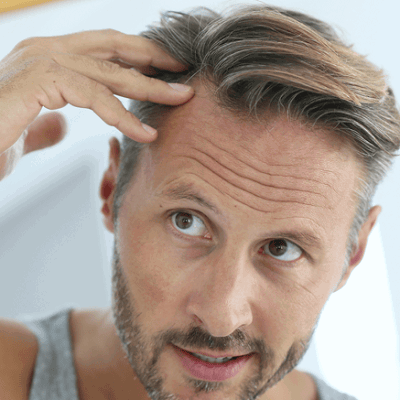Pros and Cons of PRP Hair Treatment And What You Should Know
Introduction
Platelet-Rich Plasma (PRP) hair treatment has garnered significant attention as a non-surgical option for treating hair loss and promoting hair regrowth. This technique involves using a concentrated form of platelets derived from a patient’s own blood to stimulate hair follicles. While PRP Hair Treatment in Muscat is heralded for its potential benefits, it also has its drawbacks. Understanding both the pros and cons of PRP hair treatment can help individuals make informed decisions about their hair restoration options.

Process
1. Blood Draw: The process begins with a simple blood draw from the patient’s arm. Typically, about 20-60 milliliters of blood is collected, depending on the treatment plan.
2. Centrifugation: The collected blood is placed in a centrifuge, which spins the blood at high speeds to separate its components. This process isolates the platelet-rich plasma from other blood components like red blood cells and white blood cells.
3. Preparation: The isolated PRP, now concentrated with growth factors and platelets, is prepared for injection. Some clinics may mix the PRP with other components to enhance its efficacy.
4. Injection: The PRP is then injected into the scalp in areas where hair thinning or loss is noticeable. Multiple injections are usually required in each session to ensure even distribution.
5. Post-Treatment Care: After the procedure, patients may experience mild discomfort or redness, but recovery is generally quick. Most people can return to their normal activities immediately.
Benefits
1. Non-Surgical: One of the primary advantages of PRP hair treatment is that it is a non-surgical procedure, reducing the risk associated with invasive techniques.
2. Utilizes Natural Elements: Since PRP uses the patient’s own blood, there is minimal risk of allergic reactions or adverse effects compared to treatments involving synthetic substances.
3. Stimulates Hair Growth: PRP contains growth factors that can stimulate dormant hair follicles, promoting hair regrowth and potentially improving hair density.
4. Minimal Downtime: The procedure is relatively quick, and most patients can resume their regular activities immediately with only minor side effects like mild swelling or redness.
5. Safe for Most Patients: PRP is generally safe and suitable for a wide range of individuals experiencing hair loss, including those with various types of alopecia.
Characteristics
1. Effectiveness: The effectiveness of PRP can vary from person to person. While many experience noticeable improvements in hair density and growth, results are not guaranteed for everyone.
2. Number of Sessions: Typically, multiple sessions are required to achieve optimal results. Patients usually undergo treatments every 4-6 weeks for the first few months, followed by maintenance sessions.
3. Cost: PRP hair treatment can be expensive, and since it is often considered a cosmetic procedure, it may not be covered by insurance. Costs can vary based on the clinic and the number of sessions required.
4. Results Timeline: Results from PRP hair treatment can take several months to become visible. Initial improvements may be subtle, with more significant changes occurring after 6-12 months.
5. Suitability: PRP is not suitable for everyone. It may be less effective for individuals with advanced hair loss or specific types of alopecia. A thorough consultation with a hair restoration specialist is essential to determine suitability.
Conclusion
PRP hair treatment offers a promising option for those seeking a non-surgical solution to hair loss. Its benefits, such as being non-invasive and utilizing natural growth factors, make it an attractive choice for many. However, potential downsides, including variability in effectiveness, the need for multiple sessions, and cost considerations, should be carefully weighed. By understanding both the pros and cons, individuals can make a more informed decision about whether PRP hair treatment aligns with their hair restoration goals and expectations.
